Knot tying is an essential skill for various activities, offering reliability and security. This guide provides a comprehensive overview, breaking down complex knots into simple, easy-to-follow steps.
Overview of Knot Tying and Its Importance
Knot tying is a fundamental skill with applications across sailing, climbing, camping, and everyday tasks. Properly tied knots ensure reliability, strength, and safety, preventing accidents. They are essential for securing loads, creating loops, and joining ropes. Whether for recreational or professional use, understanding knots enhances efficiency and confidence. This guide provides clear instructions for mastering essential knots, emphasizing their practical importance and versatility in various situations.
Why a Knot Tying Guide is Essential
A knot tying guide is indispensable for mastering the techniques required to secure, lift, or fasten effectively. It offers step-by-step instructions, ensuring each knot is tied correctly and safely. Whether for outdoor adventures, emergency situations, or everyday tasks, a guide provides clarity and confidence. With detailed illustrations and practical tips, it serves as a valuable resource for beginners and experienced users alike, helping to avoid common mistakes and enhance overall proficiency in knot tying.
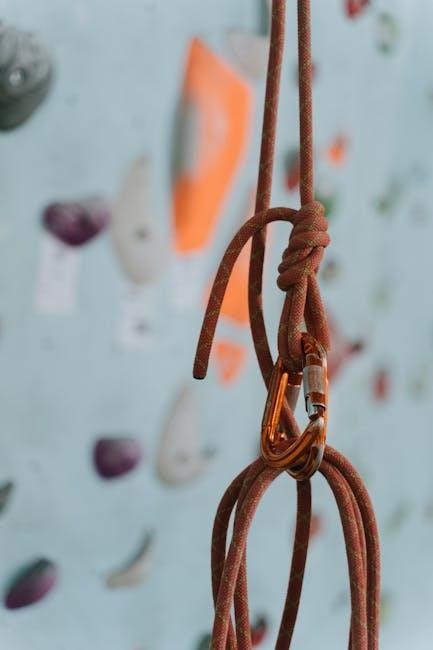
Types of Knots
Knots are categorized into climbing, sailing, and camping types, each designed for specific tasks. Climbing knots ensure safety, sailing knots secure boats, and camping knots simplify outdoor setups.
Climbing Knots
Climbing knots are critical for safety in mountaineering and rock climbing. They secure climbers to ropes, anchors, and harnesses. The Figure Eight Knot is a favorite for its strength and reliability, while the Bowline Knot creates a secure loop. These knots prevent accidents and ensure climbers can ascend or descend safely. Proper tying is essential to avoid risks. Regular practice and inspection are vital to maintain trust in these life-saving knots.
Sailing Knots
Sailing knots are designed for maritime use, ensuring safety and efficiency on the water. The Round Turn and Two Half Hitches securely tie a boat to a post, while the Bowline Knot creates a reliable loop for hoisting sails or securing loads. These knots withstand harsh marine conditions and are essential for docking, anchoring, and rigging. Proper tying ensures durability and prevents failures, making them indispensable for sailors. Regular inspections and practice are key to mastering these critical nautical ties.
Camping Knots
Camping knots are versatile and reliable, ensuring secure setups in outdoor environments. The Figure Eight Knot acts as a stopper knot, preventing ropes from slipping through pulleys or holes. The Sheet Bend Knot is ideal for joining two ropes of different thicknesses, useful for extending shelter lines or repairing gear. The Square Knot, or Reef Knot, is essential for tying bundles or securing items like food bags. These knots are crucial for setting up tents, creating clotheslines, and managing gear, making them indispensable for any camping adventure. Regular practice ensures they can be tied quickly and securely in the field.
Essential Knots Everyone Should Know
Mastering key knots enhances safety and efficiency in various activities. The Figure Eight, Bowline, and Sheet Bend are fundamental, offering reliability and versatility for climbing, sailing, and camping. They ensure secure loops, quick connections, and strength under load, making them indispensable for professionals and enthusiasts alike. Regular practice of these knots is crucial for building muscle memory and confidence in their use. Proper technique ensures they hold securely, preventing accidents and failures in critical situations. These knots form the foundation of knot tying skills, essential for everyone to learn and master.
Figure Eight Knot
The Figure Eight Knot, also known as the Flemish Bend, is one of the strongest and most reliable knots. It is widely used in sailing and rock climbing to create a secure loop at the end of a rope. When tied correctly, the Figure Eight does not slip, making it ideal for critical applications where safety is paramount. It is often used as a stopper knot to prevent a rope from running out of a pulley or block. This knot is essential for securing loads and is a must-learn for anyone serious about knot tying. Regular practice ensures mastery of this vital technique;
Bowline Knot
The Bowline Knot is a reliable and versatile knot used to create a secure loop at the end of a rope. It is often employed in sailing and rescue operations due to its ability to withstand heavy loads. To tie a Bowline, form a small loop, pass the rope through it, and wrap it around the standing part before threading it back through the loop. While it is highly reliable, it can be less secure in certain materials like polypropylene if not tied correctly. Regular practice ensures proper tension and a secure hold, making it an essential knot for critical applications.
Sheet Bend Knot
The Sheet Bend Knot is a simple and effective way to join two ropes together, even if they are of different thicknesses. It is commonly used for extending rope length or repairing a rope. To tie it, overlap the ends of the two ropes, form a loop with one, and pass the other end through it. Wrap it around and tuck it under the standing part. Pull tight to secure. This knot is reliable for most applications, though it may slip under heavy loads if not tied correctly. Regular practice ensures a secure and consistent tie.
Materials Needed for Knot Tying
Durable ropes, sturdy cords, and essential tools like sticks or marlinspikes are required. Practice with various materials ensures mastery of different knot-tying techniques and applications.
Ropes and Cords
Choosing the right ropes and cords is crucial for effective knot tying. Natural fibers like cotton and hemp are ideal for grip and traditional knots, while synthetic materials such as nylon and polyester offer durability and resistance to moisture. The diameter and texture of the rope significantly impact knot performance, with thicker ropes providing better hold but being harder to manipulate. For specific activities, specialized cords like paracord or climbing ropes are recommended. Selecting the appropriate material ensures strength, reliability, and ease of use, making it essential to match the rope to its intended application.
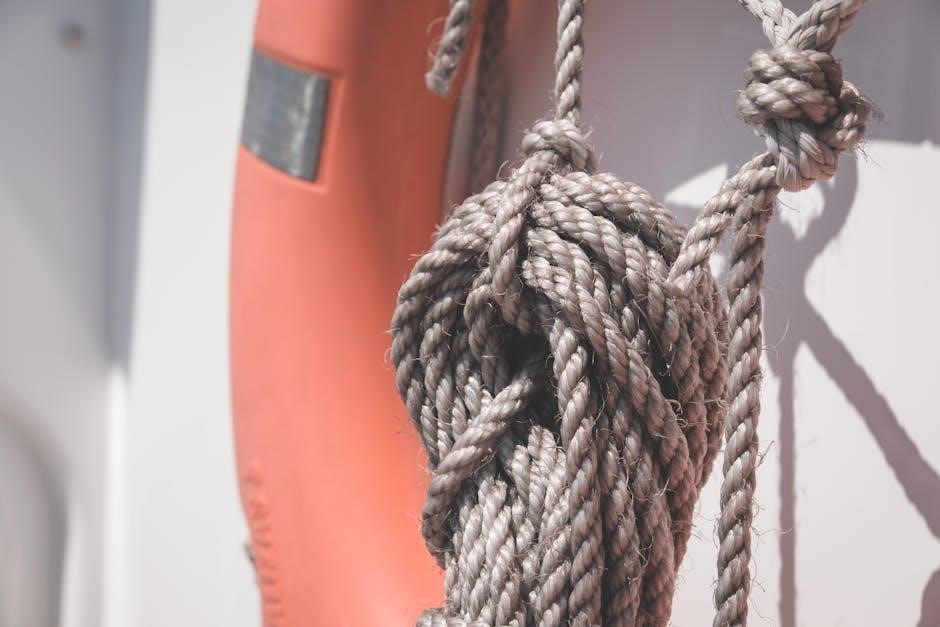
Knot Tying Tools
Knot tying tools enhance efficiency and precision. A 3-in-1 knot-tying tool is versatile, offering three functions to simplify complex knots. Fids, commonly used in sailing, help thread ropes through tight spaces. Marlinspikes are essential for loosening knots in thick ropes. Rope clamps secure ends during tying, preventing slippage. These tools are invaluable for mastering various knots, ensuring reliability and safety in applications like climbing, sailing, and camping. They make the learning process smoother and more effective, especially for beginners. Investing in the right tools ensures your knots are secure and long-lasting.
Practice Equipment
Essential practice equipment includes durable ropes, a 3-in-1 knot-tying tool, and a sturdy post or mannequin. Natural fiber ropes, like cotton or wool, are ideal for beginners. Synthetic ropes, such as nylon, offer durability for long-term use. A measuring tape ensures accurate loop sizes, while a knife trims excess rope. These tools help master knots like the bowline and figure eight. Regular practice with quality equipment builds confidence and skill, making knot tying a lifelong asset for camping, sailing, and climbing adventures. Consistent practice is key to mastering these essential knots.

Step-by-Step Instructions
Clear, concise steps guide you through tying knots like the bowline and figure eight. Detailed visuals and simple language make learning easy and accessible for all skill levels.
Basic Knot Tying Techniques
Mastering basic knot tying involves creating loops, wrapping ropes around objects, and securing ends. Start by forming a loop, then wrap the rope around the standing part. Tighten the knot by pulling both ends firmly. Ensure consistent tension to avoid slack. Practice tying knots like the overhand and half hitch to build a strong foundation. These techniques are essential for more complex knots. Always maintain control and visualize the desired outcome. Regular inspection ensures reliability. Adapt these methods for sailing, climbing, or camping applications, making knot tying a versatile and indispensable skill.
Common Mistakes to Avoid
When tying knots, common mistakes include improper tension, incorrect wrapping, and failure to secure ends. Over-tightening can distort the knot, while under-tightening may cause it to slip. Ensure loops are formed correctly and ends are threaded through properly. Avoid twisting ropes unnecessarily, as this weakens the knot. Always follow step-by-step instructions and practice regularly to build muscle memory. Neglecting to inspect knots after tying can lead to critical failures. By addressing these errors, you can ensure your knots are reliable and perform as intended in any situation.
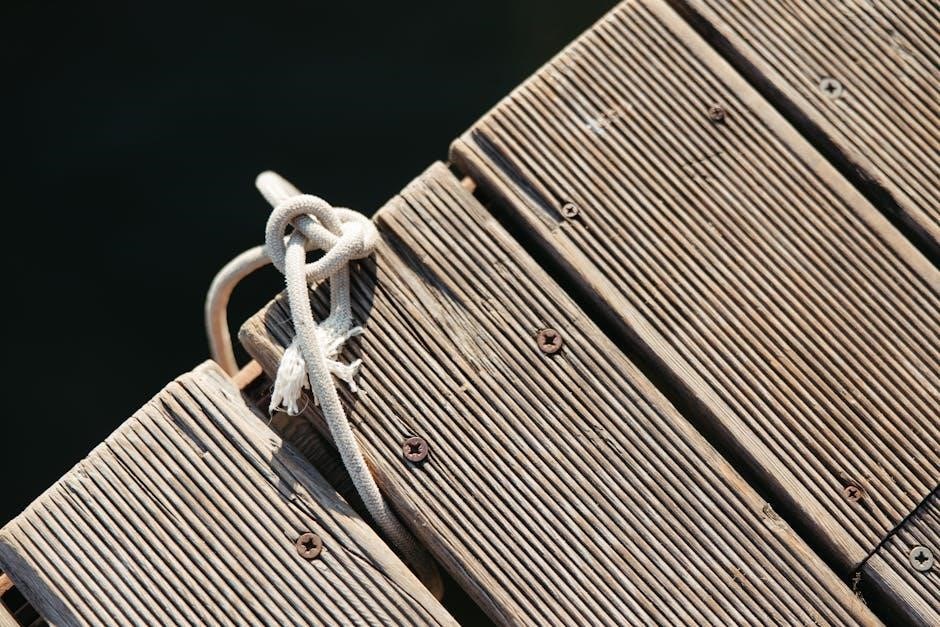
Safety Considerations
Always inspect knots before use, follow load limits, and ensure proper rope condition. Wear protective gear and practice in a safe environment to prevent accidents.
Load-Bearing Safety
Understanding load-bearing safety is crucial for securely using knots. The Figure Eight Knot is one of the strongest, ideal for sailing and climbing. The Bowline Knot creates a reliable loop that doesn’t slip, making it perfect for lifting or securing heavy loads. The Sheet Bend Knot is excellent for joining two ropes, but ensure proper tightening for stability. Always test knots under controlled conditions and avoid using damaged ropes. Regular inspections and adherence to best practices ensure safe and reliable outcomes in all applications.
Regular Knot Inspections
Regular inspections are vital to ensure knot reliability and safety. Examine knots for wear, frays, and moisture damage, especially in critical applications like climbing or sailing. Check the Figure Eight Knot for proper formation and tightness, as it’s often used in load-bearing situations. The Bowline Knot should be inspected for a secure loop that doesn’t slip under tension. Test knots periodically by applying gentle force to confirm stability. Always replace damaged or uncertain knots to prevent failures. Regular maintenance ensures long-term reliability and reduces risks in demanding environments.
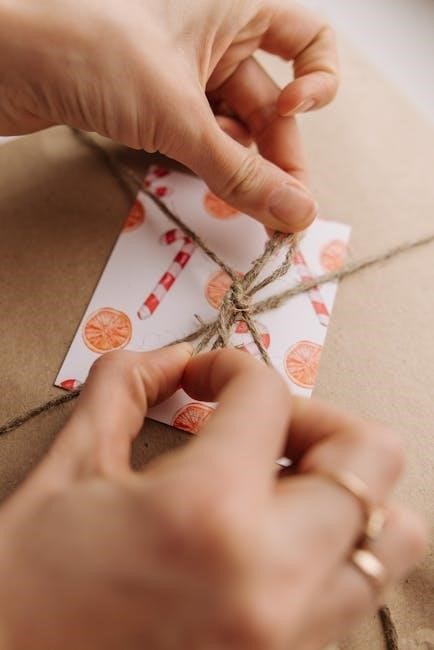
Resources for Further Learning
Explore detailed guides like the 3-in-1 Knot-Tying Tool PDF and books such as The Useful Knots Book for comprehensive, practical knot-tying knowledge and techniques.
Recommended Knot Tying PDF Guides
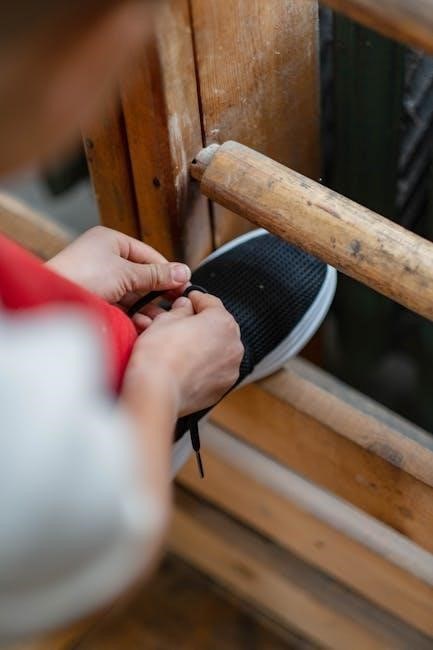
For detailed knot-tying instructions, the 3-in-1 Knot-Tying Tool PDF Guide is an excellent resource, offering step-by-step visuals and descriptions for over a dozen essential knots. The Useful Knots Book provides practical, no-nonsense instructions for 25 key knots, complete with tips on their best uses. Additionally, The Complete Guide to Knots and Knot Tying by Geoffrey Budworth is a comprehensive reference with clear illustrations. These guides are perfect for beginners and experienced users alike, ensuring mastery of various knots for sailing, climbing, and everyday applications.
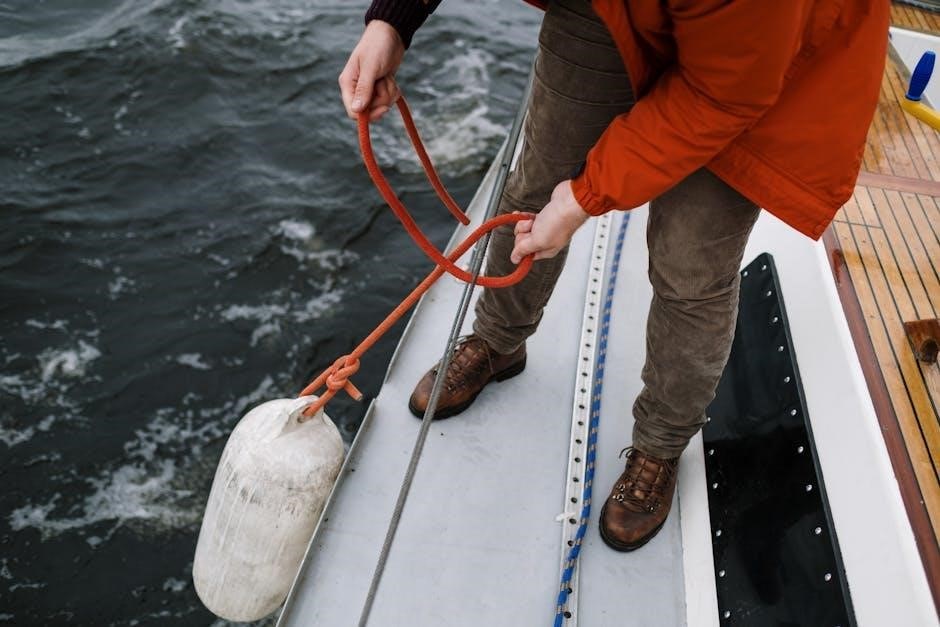
Books on Knot Tying

The Useful Knots Book is a practical guide offering step-by-step instructions for 25 essential knots, complete with visuals and tips for their best applications. The Complete Guide to Knots and Knot Tying by Geoffrey Budworth provides a detailed exploration of various knots, making it a valuable resource for enthusiasts. These books are designed to cater to both beginners and experienced individuals, ensuring a thorough understanding of knot tying techniques for sailing, climbing, and everyday use. They are indispensable companions for mastering this versatile skill.
Mastery of knot tying empowers individuals with practical skills, enhancing safety and confidence. Essential knots like the Figure Eight and Bowline are foundational for various applications. Practice regularly to ensure secure and reliable ties in all situations!
Final Thoughts on Mastering Knot Tying
Mastering knot tying is a valuable skill that enhances safety, efficiency, and confidence across various activities. From camping to sailing, knowing the right knots ensures reliability. Regular practice and understanding the purpose of each knot are key to proficiency. Start with essential knots like the Figure Eight and Bowline, gradually expanding your repertoire. With dedication, you’ll become adept at securing loads, creating loops, and solving real-world challenges. A comprehensive guide or PDF resource can provide clear instructions and illustrations, making the learning process seamless and enjoyable for both beginners and seasoned practitioners alike. Keep practicing to refine your techniques and stay prepared for any situation that requires a secure and dependable knot.
